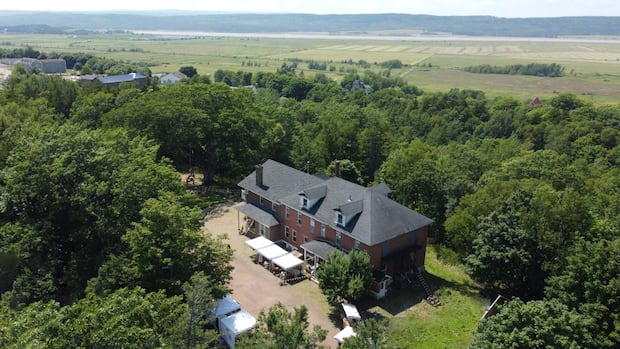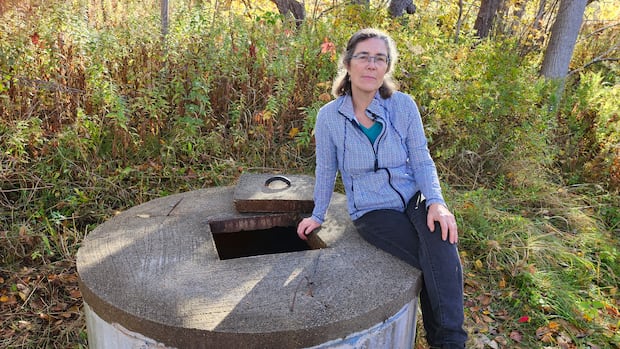The village of Dorchester in southeast New Brunswick is the last place Miriam Andrews expected to end up.
“I knew nothing about it,” the United Kingdom native said.
But that all changed after she met New Brunswicker Stephen Trites while they were both living in British Columbia. The couple bonded over their love of old homes and soon began searching for a historic property to renovate and make their own.
“We were inspired by a lot of the chateaus and the European-type historic houses,” Andrews said. “And we were like ‘Where in Canada do we find an old house?'”
Andrews and Trites found their fixer-upper in 2019. It was an abandoned 27-room property nestled among mature trees in Dorchester.
After flying across the country to see it, they immediately put in an offer. Within months, the couple left their West Coast lifestyle behind to make a new start in the East.
Historic past
Turns out, the dilapidated, two-storey 1840s Georgian manor came with quite a past.
It was built for Sir Albert Smith, a former premier of New Brunswick, and his wife Lady Sarah Smith. As Andrews discovered in her research, Smith had a curious role in Canada’s history.
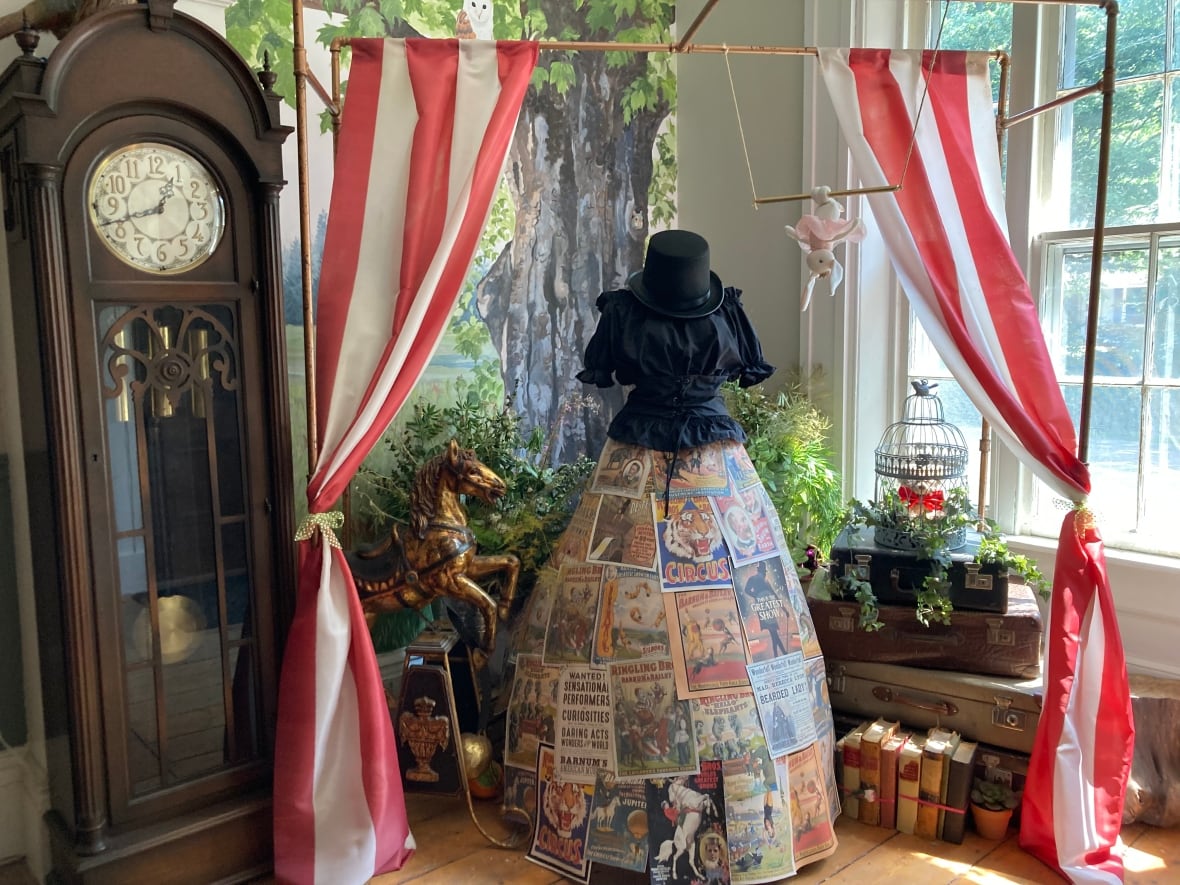
Smith served in the cabinet of Leonard Tilley, who later became a Father of Confederation. Smith was opposed to Confederation and became leader of the Anti-Confederates, defeating Tilley two years before the Dominion of Canada was formed in 1867.
Smith couldn’t see the Dorchester area benefiting from joining the new union of provinces, Andrews said.
“It was an affluent part of New Brunswick and very much kind of a hub.”
He wasn’t premier for long, and despite his anti-Confederation stance, Smith found a place in federal politics. Under Prime Minister Alexander Mackenzie, he became minister of marine and fisheries. After successfully negotiating a deal that required the United States to pay for access to Canada’s East Coast fishery, Smith was recognized for his service.
“Albert Smith was the first person in New Brunswick to be knighted by Queen Victoria,” she said. “Because of that deal he was knighted.”
Lady Sarah Smith, who was much younger than her husband, lived in the Dorchester house for another 40 years after he died. The estate eventually went to her granddaughter, who sold it and donated the money to Mount Allison University.
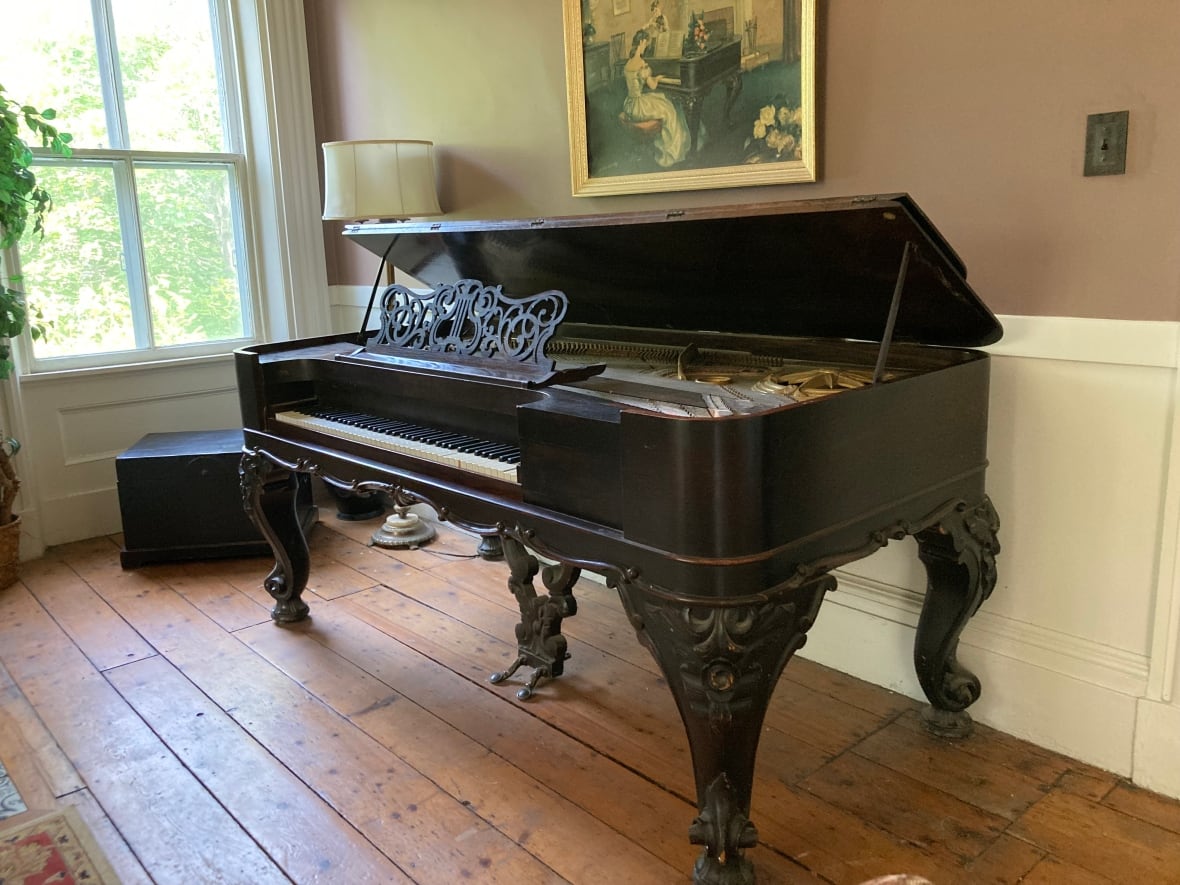
In later years, the provincial government used it for social housing before it was purchased by a religious organization. The home was on the market for five years before Andrews and Trites bought it.
The property was originally named Woodlands. However, in honour of the home’s first lady, the couple decided to rename it Lady Smith Manor.
Labour of love
One of the couple’s earliest projects was to create a private living space before tackling other parts of the property. To save costs, they’ve done much of the work themselves.
“We do all the drywall, take all the plaster out, do all the insulation, do all the painting trims,” she said. “In those six years we’ve been here, we only took Christmas Day off each year, so every day we would just work on something.”
Despite the many hours of hard work, Andrews said, renovating an old home has brought some interesting rewards, such as finding hidden treasures.
“We found a lot of alcohol bottles up in the attic, under the floor board, someone hiding them,” she said. “We found a prescription bottle from a doctor in Sackville.”
Today, nearly all the rooms have been renovated to their former glory, including a music room that features a 185-year-old square grand piano. The piano no longer works, but Andrews saw value in keeping it.
“So the story goes, the piano was built in 1840, which is about the same time as the house was built. This is the only piece here that was in the house when we moved in that we kept. Inside, it’s all hand-painted on the top of the inside of it.”

While renovating Lady Smith Manor has been a labour of love, it’s also been part of a bigger plan the couple have had for the property.
The estate has become a picturesque location for weddings, crafters’ markets, book clubs and afternoon teas. Events like these help pay for the home’s upkeep and maintenance.
The manor also has two guest suites that visitors can rent. The rooms offer a mix of modern amenities, such as heated floors and towel racks, and traditional decor such as fireplaces, vintage chandeliers and a clawfoot tub salvaged from a local farmhouse.
“The guy who sold it to us, he’s now sadly passed,” Andrews said. “This was the tub that he used when he was a baby.”
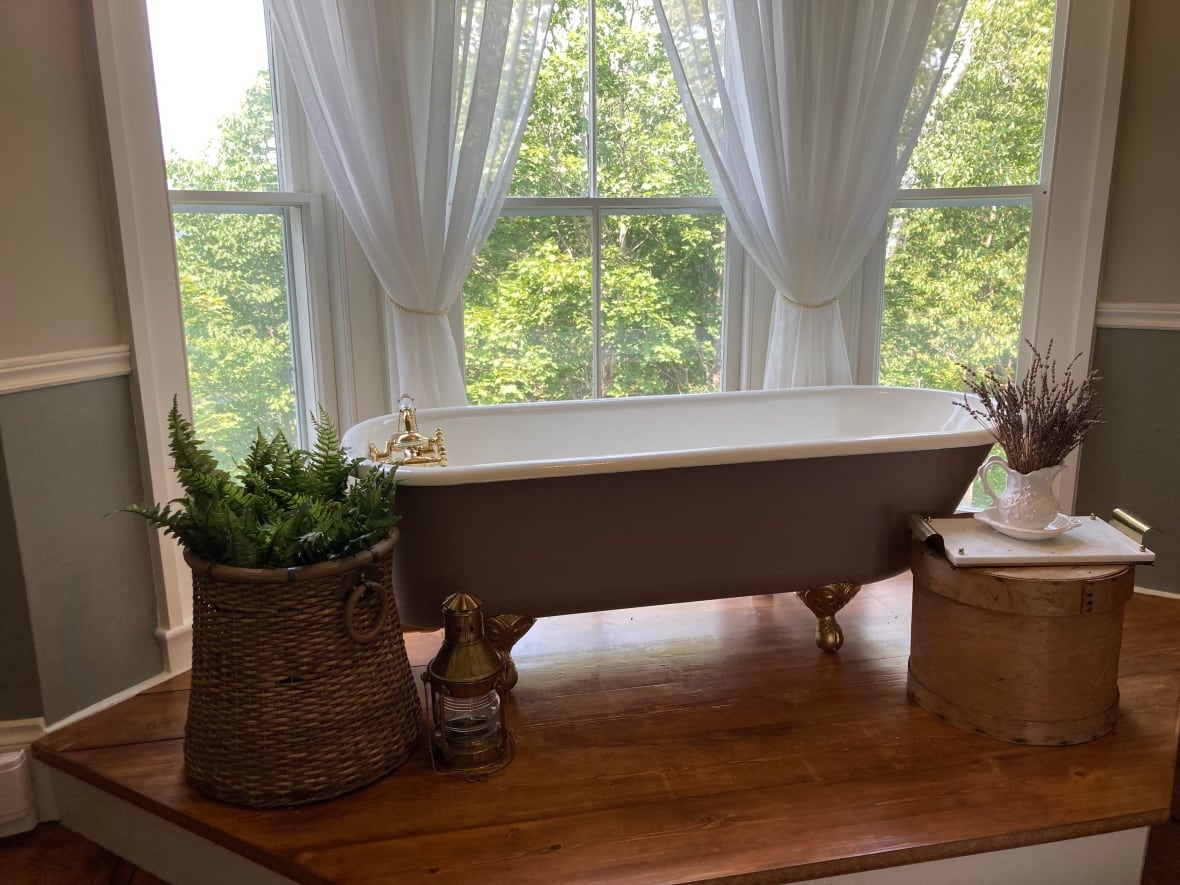
An old English-style tavern called, the Thirsty Whippet, has been added, with a decor that’s a mix of red brick, dark wood beams and century-old parlour seating that would make you question whether you are in Dorchester, N.B., or in Dorchester, U.K.
“Back in the day, there was a pub in every village and that’s where everyone got together, where meetings were held and people connected,” she said. “And it’s going back to that piece of connection again.”
If Lady Smith Manor becomes known as a destination where the community can gather and experience a piece of New Brunswick’s history, Miriam Andrews said, then their hard work has been worth it.
“We always knew that what we were doing and what we were creating was for other people. … We want you to feel like this is your home away from home.”


